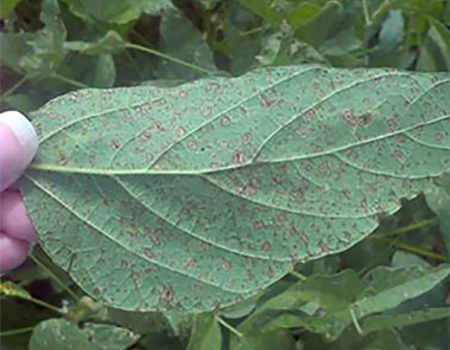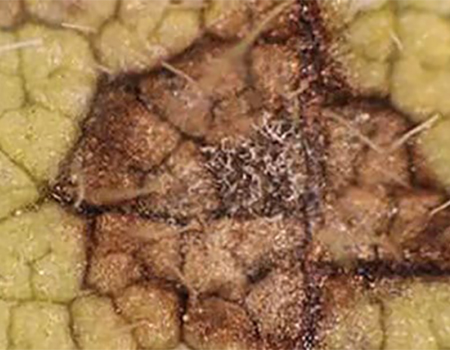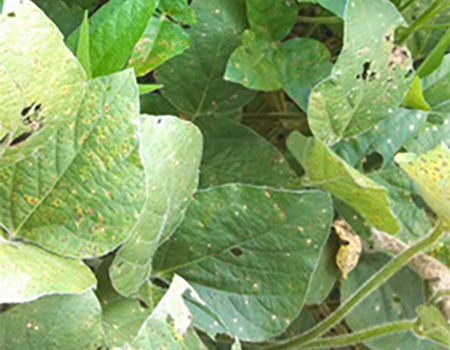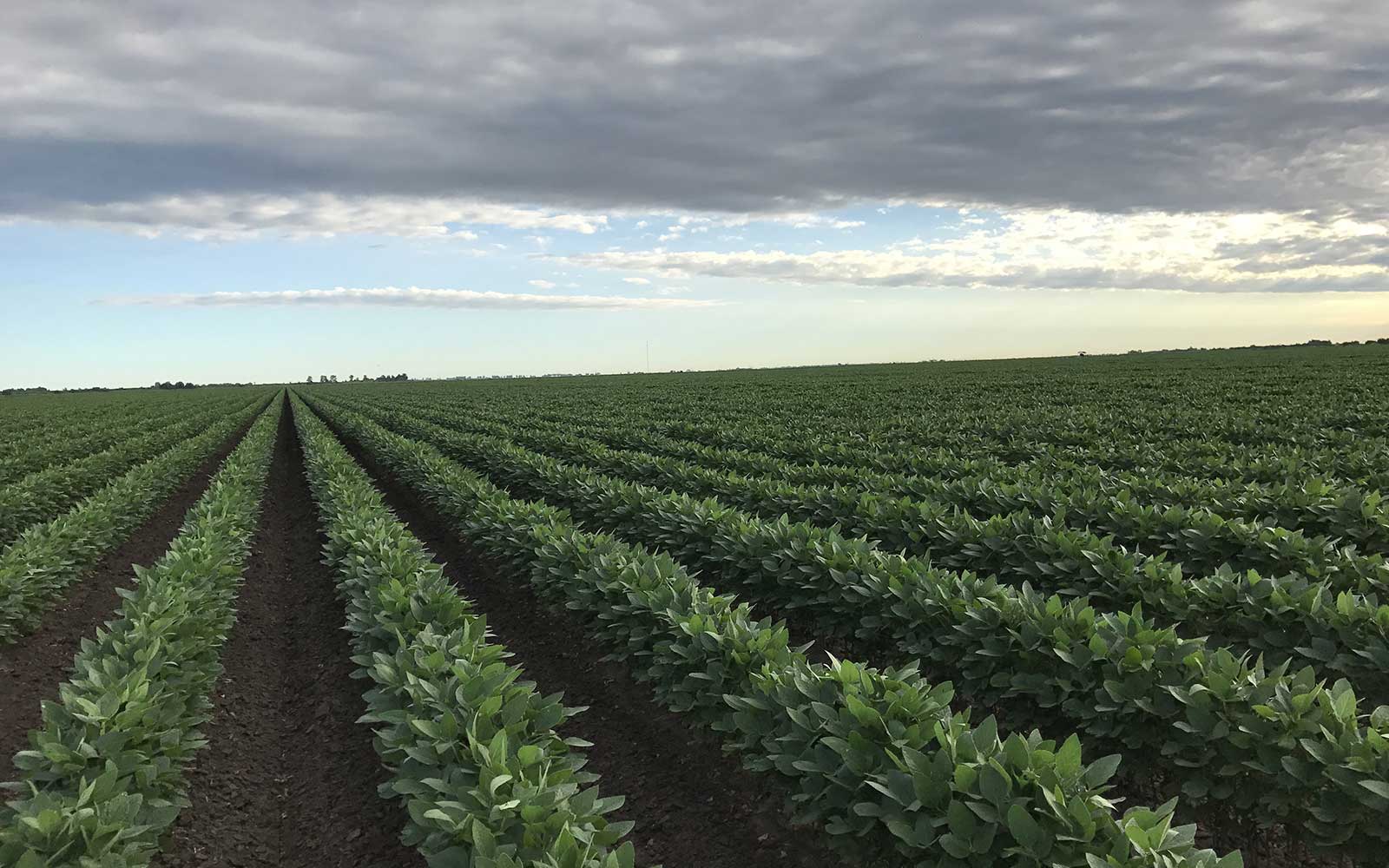Speckled soybean leaves often indicate frogeye leaf spot, a major disease that can negatively impact a plant’s productivity and, in turn, a grower’s yield.
Frogeye leaf spot, caused by the fungus Cercospora sojina, is becoming more common in areas further north in the U.S. Warm temperatures, humid weather, cloudy days and frequent rain are conditions that provide an ideal setting for a frogeye leaf spot infection to take hold, which means it’s important for soybean growers to be vigilant in spotting this disease. In 2018, the Iowa State University Extension and Outreach Integrated Crop Management team published an article called “Mueller’s Top 3 Soybean Diseases of 2018” which listed Frogeye leaf spot at number one of the regions top three diseases in Iowa soybeans. Frogeye leaf spot is a disease that is spreading north to much of the state.
SYMPTOMS AND INFECTION
According to the Soybean Research and Information Initiative, frogeye leaf spot appears as tan to gray spots surrounded by pronounced dark purple margins that are usually about ¼ inch in diameter. The University of Tennessee’s Institute of Agriculture also notes that if lesions are sporulating, then a dark black area in the center of these lesions will be visible. These spores can be carried by wind and rain causing the infection to spread.


Photos Courtesy of Dr. Heather Kelly, Assistant Professor at the University of Tennessee.
While a soybean plant can contract frogeye leaf spot at any stage of development, infection most often occurs on young expanding leaves after flowering. Fully-expanded leaves show more resistance. If left unchecked, the fungus can eventually infect soybean pods and stems.
According to the University of Nebraska-Lincoln’s CropWatch, stem infections often appear later in the season as long and narrow dark lesions with flattened centers. Pod lesions appear circular to elongated and slightly sunken. These lesions first appear reddish-brown in color, then turn gray or brown. Eventually, severe pod infections can cause infected, discolored seed that often has a cracked, flaking coat.

Photo Courtesy of Dr. Heather Kelly, Assistant Professor at the University of Tennessee.
MANAGEMENT
Because conditions in the south are ideal for frogeye leaf spot occurrences, southern soybean growers should take extra care in preventing or managing this disease in their fields. The University of Tennessee suggests planting soybean varieties that are resistant to frogeye leaf spot. Visit their website to view soybean variety tests and other resources that can help you make an informed decision on the best soybean variety for your fields. You can also contact your local extension specialist.
The Soybean Research and Information Initiative also stresses the importance of scouting your soybean fields for signs of frogeye leaf spot. Because this disease can vary greatly in severity in a relatively short distance, they suggest scouting at least one area per every 10 acres as plants are beginning to bloom. Special attention should be given to those areas that receive early morning shade.
If infection is found, fungicide applications can be applied before soybean growth. Our ACROPOLIS® fungicide can be applied at the R3 soybean growth stage, providing substantial disease reduction while also delivering yield benefits over untreated control. The University of Tennessee has also listed ACROPOLIS as the top performer when compared to other fungicides that offer protection against frogeye leaf spot.
Lastly, it’s important to remember that this disease overwinters in residue. This means fields that are continuously planted with soybeans and that have reduced tillage systems will tend to have higher levels of the fungus. The Soybean Research and Information Initiative suggests rotating out of soybeans for at least two years if residue can’t be buried.
For more tips and product information, visit AMVAC.com.
©2019 AMVAC Chemical Corporation is a wholly owned subsidiary of American Vanguard Corporation. All rights reserved. AMVAC, ACROPOLIS and respective logos are trademarks owned by AMVAC Chemical Corporation.
Important: Always read and follow label instructions. Some products may not be registered for sale or use in all states or counties. Please check with your state agency responsible for pesticide registration to ensure registration status. All products are EPA registered.
